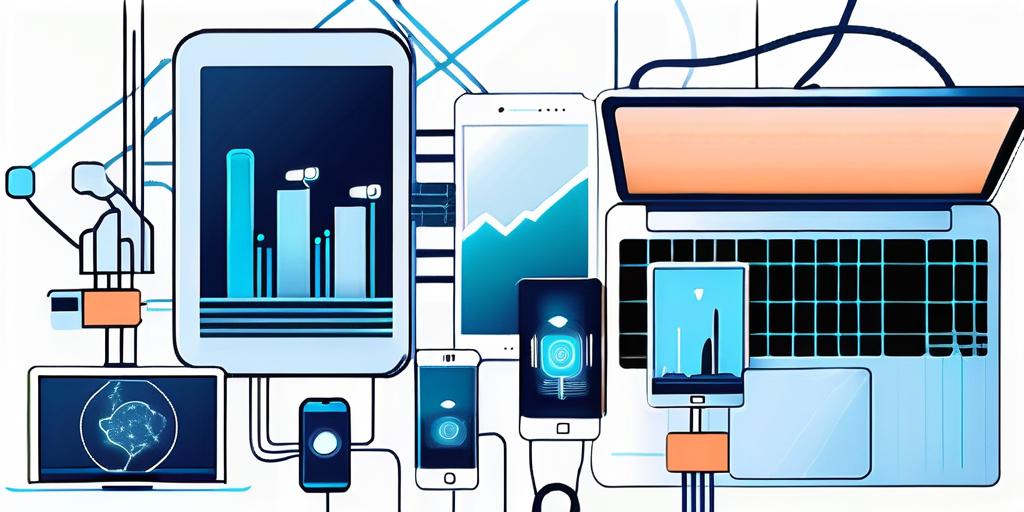Top 10 Digital transformation Trends You Don’t Wanna Miss in 2024

Audio : Listen to This Blog.
Imagine this: the year is 2024, and your business is facing a crossroads. Traditional methods are still in place, but the competition is embracing the latest technologies and soaring ahead. Are you ready to join them?
Advancements in AI, cloud computing, and other technologies are shattering the status quo and redefining what’s possible. But where do you begin? This article dives deep into 10 key trends of digital transformation to empower you to thrive in the digital-first world. From AI-powered efficiency to immersive experiences in the Metaverse, we’ll explore how these trends are revolutionizing the way businesses operate.
At a CAGR of 16.5%, the world market for digital change will grow from $469.8 billion in 2020 to $1,009.8 billion by 2025.
So, buckle up and get ready to discover the future. Let’s see which of these trends can help you propel your business growth towards unprecedented success.
Understanding Digital Transformation
Before diving into the trends, let’s briefly discuss the concept of digital transformation. Digital transformation refers to the integration of digital technologies into all aspects of a business, fundamentally changing how companies operate and deliver value to their customers. It involves leveraging technology to streamline processes, enhance customer experiences, and drive innovation.

Furthermore, digital transformation is not just about implementing new technologies; it also entails a cultural shift within organizations. It requires a mindset that embraces change, fosters collaboration, and values continuous learning. Successful digital transformation initiatives involve not only upgrading systems but also empowering employees to adapt to new ways of working and thinking.
The Impact of Digital Transformation on Businesses
Digital transformation has a profound impact on businesses of all sizes and industries. It empowers organizations to optimize their operations, improve efficiency, and drive innovation. Companies that embrace digital transformation can better meet customer needs, unlock new revenue streams, and gain a strategic advantage over their competitors.
Furthermore, digital transformation can lead to enhanced data-driven decision-making processes, enabling businesses to derive valuable insights from vast amounts of information. By harnessing the power of data analytics and artificial intelligence, companies can make informed strategic choices, personalize customer interactions, and forecast future trends with greater accuracy. This data-centric approach not only enhances operational efficiency but also fosters a deeper understanding of market dynamics and consumer behavior.
Now that we have understood all about digital transformation, let’s dive straight into the trends that await us in 2024.
The Top 10 Digital Transformation Trends for 2024
1. Artificial Intelligence and Machine Learning
Up from just 1% in 2021, Gartner predicts that by 2024, about 60% of data used for AI will be automatically created to mimic reality, imagine what might happen in the future, and lower the risks that come with AI. Artificial Intelligence (AI) and Machine Learning (ML) have been gaining momentum in recent years, and their impact on businesses will only continue to grow. AI and ML technologies enable organizations to automate processes, gain insights from vast amounts of data, and deliver personalized experiences to customers.

2. XaaS (Anything-as-a-Service)
The projected increase in the adoption of “Anything-as-a-Service” (XaaS) by SMBs and midmarket firms will represent a significant transition from product-centric to service-centric technology acquisition. Scalability, operational efficiency, and immediate cost savings are all features of XaaS that make it especially appealing to SMBs. Additionally, it facilitates the shift from conventional fee-for-product frameworks to outcome-driven models, contracts attached to predetermined business objectives, and shared risk arrangements. However, for SMBs to fully capitalize on these advantages, they will require assistance in negotiating binding and equitable contracts with suppliers and navigating obstacles including data security concerns, over-reliance on single providers, and the complexities of integrating XaaS models. This model offers numerous advantages:
- Predictable costs: Businesses pay a fixed monthly fee, eliminating upfront costs and offering greater budgetary control.
- Increased agility and scalability: Resources are readily available and easily scaled, allowing businesses to adapt to changing needs.
- Improved security and compliance: Providers handle updates, ensuring systems stay protected and meet regulations.
- Focus on business value: Businesses can redirect resources from IT management to core activities, driving innovation and growth.
Expect the XaaS market to soar, reaching $980 billion. We will see the emergence of industry-specific solutions and the convergence of XaaS with AI, leading to intelligent and automated service delivery.
3. Cloud Computing and Storage
Based on market research, the world’s cloud security market will grow at a rate of 9.1% per year, rising from USD 40.7 billion in 2023 to USD 62.9 billion by 2028. Cloud computing has revolutionized how businesses store and access data. According to Gartner, new technologies are driving spending in the cloud and making it mainstream. With cloud-based solutions, organizations can securely store and manage data, access applications and services remotely, and scale resources on-demand. Cloud computing enables businesses to be more agile, cost-effective, and globally connected.
4. Low-Code/No-Code Development
Low-code/no-code development empowers individuals with minimal coding experience to build business applications. Statista predicts that globally spending on digital change will hit $3.4 trillion by 2026.
- Democratization of innovation: Non-technical users can create solutions, fostering broader collaboration and ownership.
- Reduced time-to-market: Drag-and-drop interfaces and pre-built components streamline development.
- Increased IT agility: IT teams can focus on complex projects while business users handle simpler development tasks.
5. The Internet of Things (IoT)
The Internet of Things (IoT) is the interconnected network of devices that collect and exchange data. IoT technology has the potential to transform various industries, from healthcare to manufacturing. In 2024, businesses will continue to explore innovative ways to leverage IoT devices and harness the power of real-time data.
6. Blockchain Technology
Blockchain technology has gained significant attention in recent years, primarily due to its association with cryptocurrencies like Bitcoin. However, its potential extends far beyond digital currencies. Blockchain technology has the ability to enhance transparency, security, and trust in various industries, including supply chain management, healthcare, and finance.
7. Enterprise Resource Planning
While technology might be the headline act in discussions of successful digital transformation, it actually plays a supporting role in a much greater play. Digital transformation service providers are orchestrating a symphony of people, processes, and technology to drive cultural change within organizations. Instead of solely focusing on building media arms or promotional channels, the true focus should be building an intelligent Enterprise Resource Planning (ERP) system. Effective ERPs offer a backstage revolution, streamlining operations, reducing spending, improving resource efficiency, and boosting productivity. While flashy technology may grab attention, don’t underestimate the power of refining your back-office operations for measurable results and sustainable profitability. So, shift your focus and ensure your organization’s core foundation is ready to support the digital transformation journey.
8. Virtual and Augmented Reality
Virtual Reality (VR) and Augmented Reality (AR) are poised for a significant commercial breakout in 2024. Imagine interactive virtual showrooms or immersive training simulations – VR and AR are revolutionizing how businesses engage with customers and streamline internal processes. From product development and testing to marketing and brand awareness, these technologies are blurring the lines between the physical and digital worlds. As hardware costs decrease and accessibility increases, 2024 is expected to be a pivotal year for VR and AR adoption, fundamentally altering how businesses operate and interact in the coming years.
9. Automation and Robotics
Automation and robotics have been transforming industries by streamlining processes, increasing productivity, and reducing costs. In 2024, businesses will continue to explore automation opportunities, including robotic process automation, autonomous vehicles, and intelligent automation solutions.
10. Customer Experience Personalization
Providing personalized customer experiences will be a key focus for businesses in 2024. It is expected that the market for customer experience management will grow from US$ 11,555.18 million in 2022 to US$ 29,780.95 million in 2028. With advances in technology, companies can gather and analyze customer data to deliver tailored experiences that resonate with individual preferences and needs. By personalizing customer interactions, businesses can build stronger relationships and foster loyalty.
Conclusion
As we dive deeper into the top 10 digital transformation trends for 2024, it’s important to understand the implications and potential impact of these trends on various industries. Let’s take a closer look at how these trends are shaping specific sectors:
In the healthcare industry, the integration of AI and ML technologies is revolutionizing patient care. From early disease detection to personalized treatment plans, these technologies are enabling healthcare providers to deliver more accurate and efficient care.
In the manufacturing sector, the combination of IoT devices and automation is driving the concept of “smart factories.” These factories leverage real-time data from connected devices to optimize production processes, reduce downtime, and enhance overall operational efficiency.
Furthermore, the financial industry is experiencing a significant transformation with the adoption of blockchain technology. Blockchain-based solutions are revolutionizing traditional banking processes, such as cross-border transactions and identity verification, by providing secure, transparent, and efficient alternatives.
It’s important for businesses to stay informed and adapt to these trends to remain competitive in the digital landscape. Ready to take the first step on your digital transformation journey?
MSys Technologies is your trusted partner, offering cutting-edge solutions and expert guidance to navigate the ever-evolving digital landscape. Contact us today and discover how we can help you unlock the full potential of these transformative trends and propel your business towards a brighter future in 2024 and beyond!
Don’t get left behind. Embrace the future, and let us guide you the way.
